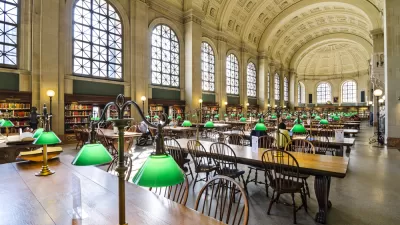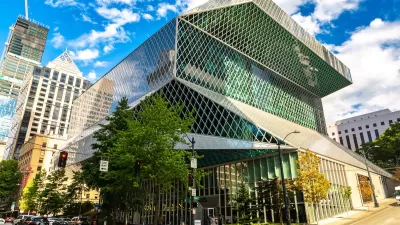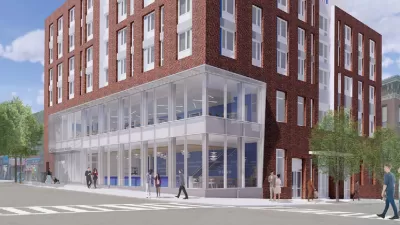A study by the Center for Urban Future reveals library hours in New York City to have improved a great deal in recent years—while still lagging behind state and national averages.
"New York City’s public libraries are now open nearly four hours more per week on average than this time last year, and are no longer next to last in average hours of operation among the state’s largest counties," according to a post by Jonathan Bowles.
Bowles provides the details of that good news, but adds a sprinkle of cold water by way of a reminder that there is work left to be done:
But while virtually all library branches in the five boroughs are now open six days a week—thanks to the $43 million increase in operating funds for libraries that was agreed to by Mayor de Blasio and the City Council last June—New York City’s libraries are still open fewer hours than most of the largest library systems in the state and the nation.
According to Bowles, New York City's public libraries are open an average of 48.8 hours a week. Last year, that number was 44.7 hours per week. The largest improvements have occurred in Queens and Brooklyn. "Last year at this time, just 29 percent of library branches in Queens and 64 percent of branches in Brooklyn were open at least six days a week; today, 98 percent of branches in both Queens and Brooklyn are open six days a week," reports Bowles.
Bowles is sharing the results of a second annual study by the Center for an Urban Future, with funding from the Charles H. Revson Foundation.
FULL STORY: LIBRARY TIMES ARE A-CHANGIN’

Planetizen Federal Action Tracker
A weekly monitor of how Trump’s orders and actions are impacting planners and planning in America.

Chicago’s Ghost Rails
Just beneath the surface of the modern city lie the remnants of its expansive early 20th-century streetcar system.

San Antonio and Austin are Fusing Into one Massive Megaregion
The region spanning the two central Texas cities is growing fast, posing challenges for local infrastructure and water supplies.

Since Zion's Shuttles Went Electric “The Smog is Gone”
Visitors to Zion National Park can enjoy the canyon via the nation’s first fully electric park shuttle system.

Trump Distributing DOT Safety Funds at 1/10 Rate of Biden
Funds for Safe Streets and other transportation safety and equity programs are being held up by administrative reviews and conflicts with the Trump administration’s priorities.

German Cities Subsidize Taxis for Women Amid Wave of Violence
Free or low-cost taxi rides can help women navigate cities more safely, but critics say the programs don't address the root causes of violence against women.
Urban Design for Planners 1: Software Tools
This six-course series explores essential urban design concepts using open source software and equips planners with the tools they need to participate fully in the urban design process.
Planning for Universal Design
Learn the tools for implementing Universal Design in planning regulations.
planning NEXT
Appalachian Highlands Housing Partners
Mpact (founded as Rail~Volution)
City of Camden Redevelopment Agency
City of Astoria
City of Portland
City of Laramie





























